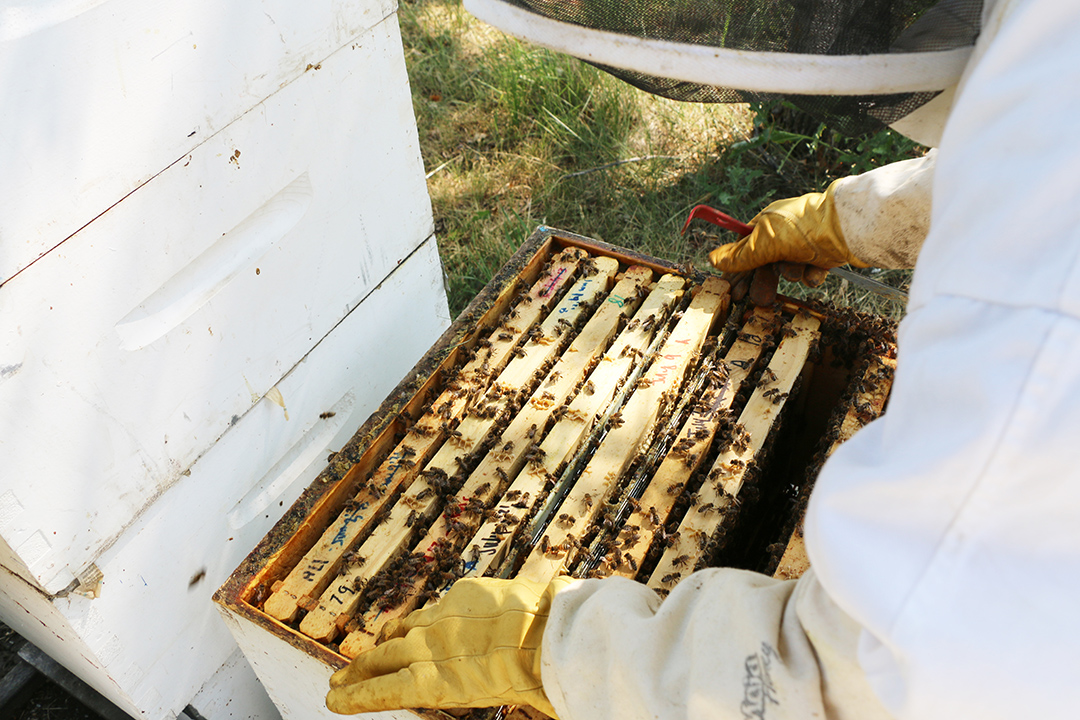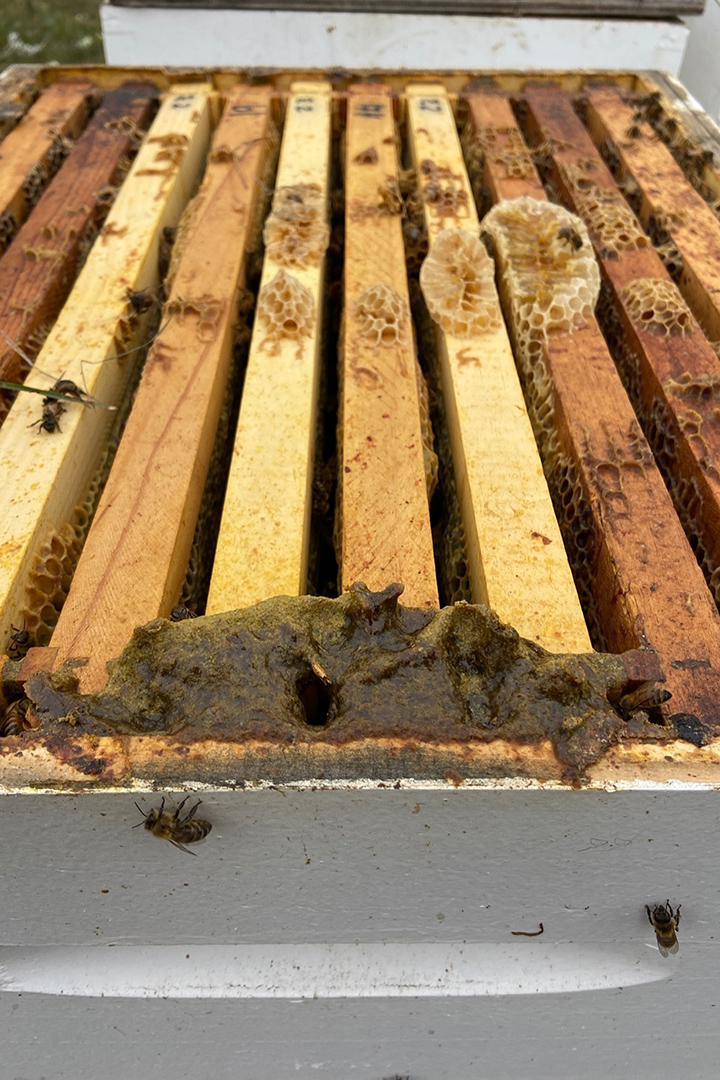
USask scientists explore new ways to protect bees from wily disease
If you haven’t caught up with the latest buzz, a bacterial illness called European foulbrood disease (EFB) is having a devastating impact on honey bee populations across North America.
By Thanuri EdirithilakeHoney bees play a crucial role in pollination, and without these industrious insects, a significant portion of our crops, vegetables and fruits would disappear. One of the threats facing honey bees is EFB, which is caused by the bacterium Melissococcus plutonius (M. plutonius). EFB kills young bee larvae when they’re just four to five days old, and the disease persists in hives despite the industry’s efforts to manage the disease through husbandry methods and the use of antibiotic drugs such as oxytetracycline.
This alarming reality in the bee world has prompted the honey bee health research group at the Western College of Veterinary Medicine (WCVM) to look closer at this problem through several studies targeting EFB.
I’m part of a team whose members are studying ways to effectively prevent and control this challenging disease. Our team includes Dr. Sarah Wood, my graduate supervisor and the University of Saskatchewan’s research chair in pollinator health, Dr. Elemir Simko, a professor in the college’s Department of Veterinary Pathology, and Dr. Tony Ruzzini, an associate professor in the WCVM’s Department of Veterinary Microbiology.
M. plutonius is a perfect villain since it contaminates the food carried by nursing bees. Once the newly hatched larvae consume the contaminated food, M. plutonius deceivingly hides and multiplies in the larval midgut. This “benevolent” bacterium “shares” nutrients with the larvae as if they were best friends. However, when food becomes scarce in the environment, it competes with the larvae for nutrients — ultimately killing them.
If this leads you to believe that bees are foolish, that’s not the case. Nature always strives for balance, and bees are very selective about what’s allowed into their hives.
Despite having a primitive immune system, these incredible insects have their ways of protecting themselves. They seal the cracks and holes of their hives with propolis, which is a mixture of bee wax and plant resins collected by bees. Propolis acts as a barrier between the environment and the bee hives.

Propolis isn’t very visually appealing. At first glance, it may not make sense that bees, which can build symmetrical hexagons, will produce something geometrically disturbing. However, propolis is very pleasant to smell, prevents bacterial growth and improves hive immunity.
Last summer, my lab bench was filled with propolis from various geographical sites including Louisiana, North Dakota and Brazil. We collected these specimens as part of our work in investigating the possibility that propolis could help to prevent EFB.
The natural habit of bees is to incorporate a portion of propolis into their honey frames. Mimicking their actions, I coated plastic wells with an ethanol extract of propolis and raised newly hatched honey bee larvae in the propolis-coated wells. Next, I infected some of the larvae with M. plutonius to induce EFB.
By the end of the sixth day, most of the infected larvae in the wells coated with propolis extracted from Louisiana had survived — but these larvae were mostly sick and smaller than the healthy, fluffy larvae alongside them. These results showed that while propolis doesn’t prevent EFB, it does provide some protection against the disease.
While propolis offers some hope, there’s still much work to be done to fully understand and combat this challenging disease that’s difficult to manage. We continue to fight against it through disease surveillance, monitoring, and testing of new potential treatment strategies.
We’re now working to identify the roles of different strains of M. plutonius and their mechanisms of antimicrobial resistance. In particular, we are interested to expand our research to include less pathogenic, “typical” strains of M. plutonius, which I have detected from honey bee colonies infected with EFB.
While it’s hard to predict the exact outcomes of our research, we’re confident that our investigative efforts will eventually shed light on this mysterious disease. Through our research, we aim to develop effective strategies for surveillance and control of EFB that will help protect honey bees and the ecosystems that they support.
The Natural Sciences and Engineering Research Council of Canada (NSERC), Results Driven Agriculture Research (RDAR), Mitacs, the British Columbia Blueberry Council, SaskCanola, Manitoba Canola Growers, Saskatchewan Beekeepers Development Commission, BASF and the Government of Saskatchewan provided funding for this research project.
Thanuri Edirithilake of Gampaha, Sri Lanka, is a master’s student studying anatomic pathology in the WCVM Department of Veterinary Pathology at the University of Saskatchewan.
